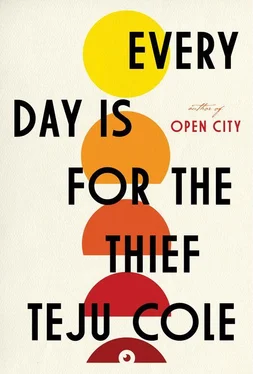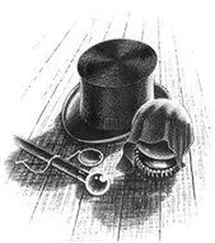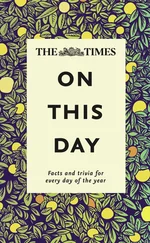She points at the offending contraption, flaps a hand at it, and fixes me with a withering stare. Her tone is acidic. But the voice changes back immediately as she picks up the verse where she left off and resumes sweetly singing the glories of her Lord. Her disconnection from the environment is absolute. A victorious Christian among the idols. Her voice floats through the rooms. The galleries, cramped, are spatially unlike what I remember or had imagined, and the artifacts are caked in dust and under dirty plastic screens. The whole place has a tired, improvised air about it, like a secondary school assignment finished years ago and never touched since. The deepest disappointment, though, is not in presentation. It is in content. I honestly expected to find the glory of Nigerian archaeology and art history on display here. I had hoped to see the best of the Ife bronzes, the fine Benin brass plaques and figures, Nok terra-cottas, the roped vessels of Igbo-Ukwu, the art for which Nigeria is justly admired in academies and museums the world over.
It is not to be. Though there are examples of each kind of art, they are few, are rarely of the best quality, and are meagerly documented. The whole enterprise is clotted with a weird reticence. It is clear that no one cares about the artifacts. There are such gaps in the collection that one can only imagine that there has been recent plunder. The best pieces have probably found their way into the hands of dealers in Paris, Zurich, and elsewhere. My recent experience of Nigerian art at the Metropolitan Museum in New York was excellent. The same had been true at the British Museum, as well as at the Museum für Volkerkunde in Berlin. A clean environment, careful lighting, and, above all, outstanding documentation that set the works in the proper cultural context. What each of those places had done was create a desire in me to see this astonishing art at its best, to see it in its own home. London, New York, and Berlin had made me long for Lagos. The West had sharpened my appetite for ancient African art. And Lagos is proving a crushing disappointment.
I am aware of the troubled history of the collecting of African art, the way colonial authorities had carted off treasures to their capitals in the nineteenth and early twentieth centuries. But I also know how rich Nigerian museums had been as recently as the 1960s and ’70s, when the British archaeologists Frank Wilson and John Wallace had been curators here. Wilson is an authority on Ife art, and Wallace a fine ethnographer of Yoruba and Riverine art. And after them there was the outstanding art historian Udoh Udoh, who was director of the National Museum. These men are academics, and they were careful to document and present what was entrusted to them. But, as with many other national institutions during the military years, in the 1980s the museums likely became sinecures for whoever got posted to them. I remember a conversation I had with Wallace at London’s School of Oriental and African Studies in 1999. A gentle, deeply learned man, he had gone to Nigeria with the British Colonial Service and risen to the top of the old Department of Art and Antiquities. He told me that one of the directors of the Lagos museum had been too superstitious to handle some of the items in his care. The man was a mallam , and he feared the fetish power of the masks and statues. According to Wallace, many items simply gathered dust in the basement.
What I see of the place gives me no great reason for thinking that a single thing has been improved in the past twenty years. I step out of the first set of galleries into a small courtyard. Along the walls, there are white cardboard plaques about various Nigerian kingship ceremonies, as well as one about a German-led archaeological expedition in Ijebuland in the 1980s. The print quality is poor, faded from exposure to the sun, and the plaques are badly mildewed. The mildew has eaten into the text and photographs in several places. The cardboard is curled up around the edges. Again, there is the inescapable feeling that one is looking at a neglected high school project. The courtyard itself is sometimes rented out for birthday parties or funerals: a friend had mentioned to me that the party for her grandmother’s funeral had been held here. So Nigerians do come to the museum, if only for a weekend party.
I enter the small gallery devoted to the royal art of Benin, and catch sight of a pair of tourists leaving the museum. Their language and bearing make me identify them as foreigners; Brazilians, I think. How sad to travel all the way from Rio or Bahia in pursuit of one’s heritage, only to meet with this. The two Brazilians are the only other visitors I see at the museum during the two hours I am there. In the Benin gallery, an employee strides purposefully toward me and asks, with a look of great concern, if I have a ticket. I show him the stub in my hand. He says: I just wanted to be sure. About five minutes later another man, equally agitated, sidles up to me and asks if I have obtained the proper ticket for the gallery. I show him my stub. I see, he says, I just wanted to make sure. I can’t quite figure out if either man is asking for a bribe. I’m happy to be in the dark over that question.
And that is it; no more galleries. The archaeological collection is pitiful — a few masks, a few beaded baskets, a clutch of figurines. Hardly anything to set the heart racing. Certainly nothing like the magnificent Plexiglas case full of exquisite Ife bronze heads that I had hoped to find. Later on, I read the curious tale of the loss of one particular Benin bronze. In 1973, the then head of state, General Gowon, had telephoned Udoh Udoh to inform him that he was coming over to the museum to select a piece as a gift for the queen of England. Dr. Udoh, the moment he put the phone down, scrambled to put some of the best pieces away into storage and out of harm’s way. But how does one hide a whole museum? Gowon arrived in due course, picked a fine Benin queen mother head from the seventeenth century, much to Dr. Udoh’s horror, and gave it to Elizabeth II. The queen of England, reasonably enough, assumed it was a replica. She put it on a shelf in the Royal Library. The true status of the piece was not discovered until 2002, when it was brought out for the Jubilee Exhibition. The fact that it was found to be a genuine antique — John Wallace helped detect this — substantially weakened the Nigerian government’s ongoing case for the return of the numerous Benin plaques currently in the British Museum. The strangest thing about that particular Benin queen mother head was that it had originally been plundered by the British in 1897 during the “punitive expedition,” and only returned in the 1950s to help set up the Nigerian National Museum. It had already crossed the ocean twice before the general, in gratitude for Britain’s support of the Federal cause during the Biafran war, gave it away again. And the British, this time around, had no intention of returning the work.
So disoriented am I by the meagerness of the work on offer that I head to the museum’s reception desk and, like Oliver Twist, ask if there is any more. Perhaps there’s an upper floor I have missed or something like that. The woman looks deeply irritated by the question; I suspect she would be irritated by any question. She points me to the side of the museum, to a building that looks like a shed. The building, bearing an old sign announcing a “temporary exhibition,” is an adjunct to the museum, dedicated solely to the history of Nigeria’s rulers from the 1914 political amalgamation of the Northern and Southern protectorates to the present day. I think I have had my most dispiriting experience of the day already, but no, there is still more punishment in store for me. The circular shed contains the National Museum’s most famous artifact: the bullet-riddled black Mercedes-Benz in which the head of state General Murtala Muhammed was assassinated during the failed coup of February 1976. This car is the only thing most Lagosian schoolchildren remember about the National Museum. Other than the pocked, gleaming vehicle, the display consists only of a series of wall plaques featuring texts about Nigerian history and photographs of the main protagonists. There are no artifacts, and no documents. The plaques, made of thick card, as in the courtyard, are extremely rudimentary, and they, too, have succumbed to mildew. The photos depict Lord Lugard, Aminu Kano, Obafemi Awolowo, Nnamdi Azikiwe, Tafawa Balewa, and others. The first of the historical texts in the display reads as follows: “In the early part of the nineteenth century, the efforts of various abolitionists gradually brought the obnoxious practice of slavery to an end.”
Читать дальше












